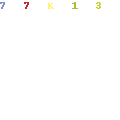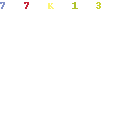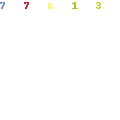Do you know how to Brush Child Teeth? If parents are aware of how to properly brush their children’s teeth with a regular toothbrush, from how old they can use pastes and rinses, they will be able to avoid many problems with the oral cavity in the future. The dental treatment gives babies severe physical discomfort, and a drill inspires fear. For this reason, it is much more useful and pleasant to teach a little person to hygiene from the age of 1 than to look for ways to help make him sit in a dentist’s chair and endure a painful session of drilling various holes.

Structural features
The process of formation of dental units in the fetus begins at the end of the first trimester of pregnancy. At this point, they are most susceptible to the influence of external and internal factors. The eruption, despite the generally accepted timing and sequence, can occur at different times depending on the individual characteristics of the newborn. At about 3 years old, the formation of a removable bite is completely completed, and the baby has 8 incisors, 4 canines, and 8 molars (20 in total).
Resembling the structure and shape of the molars (they consist of enamel, dentin, and pulp), milk teeth do not have the same strength, and their outer hard layer is much thinner. They also have the following features:
- The small size of crowns;
- The divergent root system, which resolves before changing the row to a permanent one;
- A large amount of loose connective tissue;
- Wide channels.
Many mistakenly believe that the first dental units do not have roots, but this is nothing more than a myth. Dairy ones have the same number as permanent ones.
At what age should children start brushing their teeth?
Cleaning should be done from the moment of eruption. Newborns do not yet have a single crown, so it is enough for adults to take care of the oral cavity, including the gums.
At about 6 months, the lower central incisor (or two at once) erupts. Since then, he needs regular hygiene procedures.
At first, you do not need to use a paste, you can also refuse a brush using a special silicone nozzle on your finger. So you safely clean not only hard tissues but also mucous membranes. Such a device helps to relieve pain during teething and performs the function of a massager.
However, the issue of accustoming to self-cleansing rows causes controversy among leading domestic and international pediatricians.
How many times a day and how long should you brush your teeth with a child
To keep the dentition attractive and healthy, kids and adults need to brush at least 2 times a day – in the morning and in the evening. It is important to adhere to this regimen constantly.
Some parents prefer to perform all manipulations immediately after waking up their son or daughter. However, the surest option is to clean the surfaces when the little person has breakfast. So it will be possible to remove food particles remaining in the inter-dental spaces.
At the same time, there are certain nuances that moms and dads should remember. If in the morning the children ate fruit or drink juice, hygiene procedures are postponed. This is because the released fruit acids contribute to the softening of the enamel layer, and as a result, useful elements contained in the enamel can be removed along with soft deposits.
In any case, dentists recommend waiting at least half an hour after eating. This time is enough to restore the acid-base balance.
Proper brushing time
For each session to give the desired result, plaque, and food debris are completely removed, and the components of the paste have time to act, it is necessary to clean the oral cavity within a certain time interval. 3 minutes is the optimal period during which all soft deposits are eliminated, and the useful elements of hygienic compositions are most effective.
This indicator is relevant for any age. Of course, if the baby is still very small, he will not be able to endure a three-minute massage with a silicone tip. However, this is not necessary.
The duration of brushing can increase or decrease with:
- Diseases of the oral cavity and inflammatory processes;
- Malocclusion and anomalies in the structure of the jaws;
- Wearing corrective structures.
Care rules
6-8 months is the approximate time interval at which you need to start brushing your teeth for a child who has just erupted a milk incisor. However, care for the mucous membranes, tongue, and gums should be almost from birth.
There are many modern accessories for painless and safe procedures suitable for different age categories. Before buying such a product, it is useful to read the label on the package and make sure that it is exactly intended for the baby.
First teeth
Oral care should be carried out immediately after discharge from the maternity hospital. Parents should wipe soft tissues with a cloth soaked in water, herbal decoction, or bactericidal alcohol-free infusion.

When milk incisors are shown on the surface, it is necessary to purchase a silicone tip brush. With its help, plaque is removed and painful mucous membranes, inflamed and swollen due to eruption, are massaged.
Helpful hints:
- Movements – “sweeping”;
- The nozzle must be placed in the child’s mouth at an angle of 45 degrees to the gums;
- The inner dental part is cleaned with short strokes;
- Each unit is given up to 15 seconds.
Children under 1-year-old
Children at 8-10 months still have too few teeth, so you can not use either a brush or paste. It is enough to take a piece of gauze cloth, moisten it in warm boiled water and wipe the oral cavity.
During teething or inflammation of the gums, it is recommended to regularly use herbal decoctions. When there are no dental diseases, you can resort to cleaning with herbs once a week as a preventive measure.
A soft silicone brush is also suitable, which is worn on the finger. It is necessary to clean not only the internal and external surfaces of the teeth, but also the tongue, gums, and the space behind the cheeks. You can clean the first teeth of a one-year-old child both with wet gauze and with special dental and dental wipes for the smallest, sold in pharmacy chains.
All manipulations should be carried out very carefully. Erupting teeth causes severe discomfort, and the baby will not like it if parents exacerbate unpleasant symptoms during hygiene procedures.
Children over one-year-old
You can purchase a special brush with silicone bristles. It is soft and does not damage the mucous membranes. For such an accessory, relatives will have to pay a little more than for a regular one, but all expenses will be justified.
With the help of this product, food debris, and bacteria are removed, while the enamel remains intact, and there will be no damage on the inside of the cheeks, gums, and crowns. Cleaning will not lead to discomfort.
you can also get A Comprehensive Guide On How To Fix Cracked Teeth Naturally
The only downside to silicone brushes is their short lifespan. You should periodically change them to new ones.
Rules for caring for a children’s toothbrush
Having figured out when you can start brushing your child’s teeth with paste, and whether it is necessary to carry out the procedure in the absence of visible crowns, it is important to familiarize yourself with the operating recommendations. The baby’s immune defense is not as strong as that of an adult, so the body is more susceptible to the occurrence of pathological processes caused by pathogens. They multiply not only in a poorly cleaned oral cavity but also in dirty bristles.
Helpful Hints:
- Wash the accessory with soap after cleaning to prevent the development of pathogenic microflora;
- Replace the product every 2-3 months;
- Do not use special covers, since the accumulated moisture is a breeding ground for bacterial agents;
- It is better to keep the brush in a glass with the bristles up while avoiding contact with objects belonging to other family members.
Toothpaste for one-year-olds and babies
The absence of a complete set of incisors, canines, and molars should not become an obstacle to full-fledged oral care using special tools – starting to brush your child’s teeth, no matter what age he is, is not only useful but extremely necessary. Modern manufacturers produce high-quality products that are allowed up to a year. It does not contain fluorine, but other essential components are present. Such products are safe to swallow and have a pleasant sweetish taste.
Most pastes are available for children from 2 years old. If parents are categorically against introducing cleaning compounds up to this point, it is enough to perform procedures with a moistened brush.
How to choose the right tool:
- Scientists have found that in the process of cleaning, babies from birth to primary school age swallow approximately 30-40% of the pasty mass. For this reason, it is important to purchase special gels, including organic ones.
- After the child learns to spit water, you can choose a product with reduced fluoride content. A single dosage should not exceed a pea.
- “Adult” stamps are strictly forbidden to be introduced before the age of seven. Otherwise, the concentrated composition will damage the enamel and harm the child’s body as a whole.
- Manufacturers offer options with different tastes, so even the picky crumbs will find the most suitable one. In the presence of an inflammatory process, it is better to give preference to products with aloe vera, tea tree oil, and propolis.
Toothbrushing technique with toothpaste
How to perform the procedure correctly (step-by-step instructions):
- Moisten the brush under the tap, apply the cleaning gel;
- Bring the bristles to the crowns at a right angle;
- Clean from the root to the ends with “sweeping” movements;
- Clean the dental surface from the inside at an angle of 45 degrees;
- Proceed to the chewing elements last;
- Rinse your mouth with clean water.
Rinsers for the little ones
Such funds are contraindicated for up to 6 years. This is due to the high probability of swallowing a concentrated composition and, as a result, problems with the gastrointestinal tract and other body systems.
How to teach a child to brush their teeth
Secrets of experienced parents and professionals.
- Personal example. For babies and children of primary school age, how mom and dad behave is extremely important.
- Lack of aggression, screaming, corporal punishment. You can not turn the procedure into hard labor and associate it with violence.
- Regularity. Manipulations should be carried out daily, in the morning and the evening. This does not depend on external factors and the desire to encourage the child.
- Purchasing a brush together. If the baby makes his own choice, he will get more pleasure from oral care.
- Safe, pleasant-smelling, tasty pasta with your favorite flavor.
- Thematic games and “competitions” with older brothers and sisters.
- Buying a dentist toy set. Carrying out dental treatment of toys, the baby will want to take care of his teeth.
- Use of an hourglass. It is required to set a task for the crumbs – to finish the cleansing activities when the last grain of sand falls.
- Planned visits to the dentist. A preschooler needs to get to know the doctor in suitable conditions when nothing bothers him. Dentika’s dentistry has created a suitable atmosphere for young patients.
Why you should teach your child to brush their teeth before the age of one
Parents who neglect obligatory hygiene procedures at an early age are very often faced with the so-called bottle caries. This is not a harmless phenomenon, leading to serious complications. Complete oral care allows you to:
- Form the correct bite, avoid distal occlusion;
- Prevent the development and reproduction of pathogenic microflora;
- Prevent dental and infectious pathologies that require long-term and difficult treatment;
- Discipline the crumbs and teach them to take care of themselves and their health.
What to do if the child does not want to brush his teeth
Many adults face this problem. It can be caused by various reasons, but the result is the same – the baby flatly refuses to open his mouth and even go to the threshold of the bathroom. Options for dealing with this situation:
- Carry out a daily ritual for all family members together, it will be much more fun;
- Change the paste and toothbrush, because the appearance of the accessory and the taste of the cleaning agent may not be to the liking of the demanding baby;
- Sing songs during the procedure, tell poems, and entertaining stories;
- Turn on your favorite cartoon (child psychologists recommend using this method as a last resort so that it does not become a habit);
- Beautifully decorate a glass in which there are accessories, for example, fold it from a Lego constructor;
- Offer to first take care of toys, and then take care of your oral cavity;
- Compete in the quality and speed of cleaning.
If you know exactly at what age you can and should brush your child’s teeth with paste, why you should not neglect care, even if the baby has a toothless mouth, and follow medical recommendations, parents guarantee their son or daughter’s gum health and the absence of dental diseases for the coming years. Buying the wrong brush, the irregularity of the procedure, mistakes in the educational process, and inaccurate actions of mom and dad are far from all the factors leading to the refusal of a small person from hygiene measures.

Each adult must decide for himself at what point the child is fully ready for independent care. It is extremely important to show by example that self-care is the basis of a happy and fulfilling life. Children need to brush their teeth properly, both in infancy and at school.
